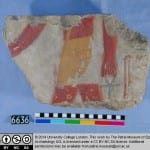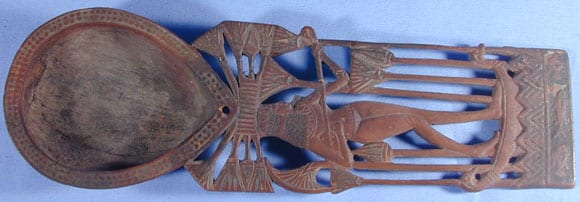Question of the Week: How tall were ancient Egyptians?
By ucramew, on 21 January 2015
This was the first question I was asked on the first day in my new role as a Student Engager in the Petrie Museum. The visitor in the Petrie came up with this when he was looking at some of the sandals – of different sizes – which have survived and are displayed in the museum’s collection. One sandal appeared to me to be around a modern-day size 9 or 10, so I guessed that those living in ancient Egypt ranged in similar stature to ourselves. I then directed the visitor towards some of the head rests in the collection, which, in what might be deemed a very ‘unscientific’ way, we also made some guesses about the size of ancient Egyptians, although we wondered whether we were looking at objects made for adults or children.
It seems that our guesses were not too far from some archaeological findings. In doing some research I learned that in under 2000 years the Egyptian population changed from being ‘an egalitarian hunter-gatherer/pastoral population to a highly ranked agricultural hierarchy with the pharaoh as the divine ruler’. One study suggested that from the Predynastic period (5000 BCE) until the start of the Dynastic period (3100 BCE) the stature of Egyptians increased, which was followed later by a decline (up to 1800 BCE). They put this down to an intensification in agricultural production which meant that access to food was more reliable, but they also suggested that it reflected the beginnings of social ranking. The decline in stature in the Dynastic period was the result of even greater ‘social complexity’, when there was greater difference in access to food and healthcare: essentially, the gap between the rich and the poor had widened.
Nevertheless, over this whole period they found that the mean height (of their sample of 150 skeletons) was 157.5cm (or 5ft 2in) for women and 167.9cm (or 5ft 6in) for men, quite like today. What is quite different is that compared with the average difference of 12-13cm between men and women found in modern populations, in ancient Egypt it was only 10.4cm. This came as a surprise to the researchers, as men in ancient Egypt were thought to have benefitted more (than would be so today) from preferential access to food and healthcare. But their findings probably reflect the fact that the status of women in ancient Egypt was relatively high compared to other ancient societies.
Like today, there are many variables which would have determined the height of an ancient Egyptian. First off, like modern-day England, Egypt was an ethnically diverse and cosmopolitan society where body shapes and sizes of all kinds would have been found: there was no single build, nor hair or skin colour. And also quite like today, the wealth and social status of an individual played a part in determining their physique (although in twenty-first century England being overweight is more often linked to deprivation rather than wealth). All through human history we can see multiple factors – from disease, social status, access to food and cultural aesthetics (to name a few) – determining our physique. As we continue to ponder the ideal, healthy body-type in our own society, I’m sure we’ll continue to look back and ask questions about our predecessors.
For the cited archaeological study, click here.
 Close
Close



















